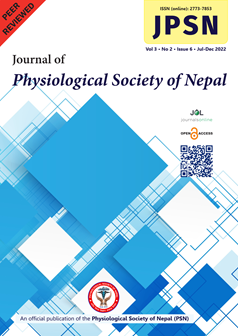A Perspective on Utilizing Mind Map as an Educational Tool for Teaching Physiology to Health Professionals Students
DOI:
https://doi.org/10.3126/jpsn.v3i2.65256Keywords:
Active learning, health professionals students, medical arts, mind mapAbstract
Current ongoing changes in the landscape of medical education demands for a more authentic learning experience for learners. A deeper understanding of learners and their needs has led educators to continually seek innovative ways to enhance their learning. Increasing availability of information and increased expectations of educators also contribute to this pursuit. Tony Buzan, an English psychologist influenced by Leonardo da Vinci's notebooks, introduced the concept of mind maps in his journey to improve learning experiences of learners. A mind map simplifies complex concepts and highlights relationships by offering a visual representation of information. As students learning physiology encounter a variety of challenges because of complex contents, mind mapping can be an invaluable tool for educators. The effectiveness of mind maps is not well established empirically, but there are anecdotal reports indicating that students who employ them reported enhanced recall and active learning. In this article, we present our perspective as educators on integrating mind maps into physiology education. A narrative literature review, theoretical basis and practical implementation of mind mapping are discussed in this article.
Downloads
Downloads
Published
How to Cite
Issue
Section
License
Copyright (c) 2024 Journal of Physiological Society of Nepal

This work is licensed under a Creative Commons Attribution-NonCommercial 4.0 International License.

